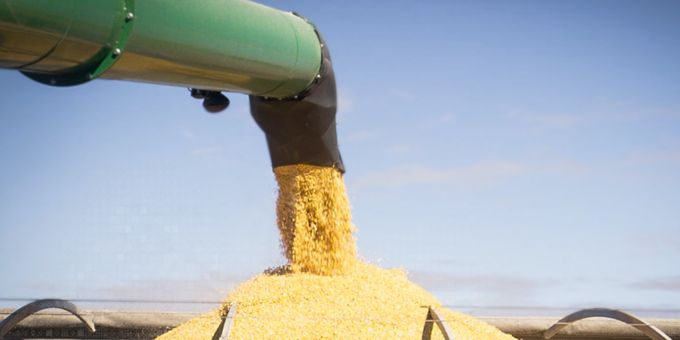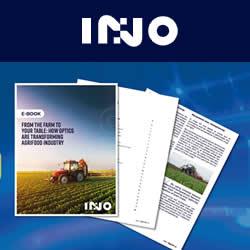As a farmer, I often work with agronomists. Chris Souder is one of the regional agronomy leads on our team at Bayer Crop Science, and he has a lot of expertise with managing crops in all sorts of conditions. Here’s the guidance he’s been giving the farmers his team works with.
 Managing Moisture: Navigating Drydown Decisions
Managing Moisture: Navigating Drydown Decisions

Greg Deim, IA Farmer and Senior Product Manager | The Climate Corporation
This season has been, without a doubt, one of the wettest since 2009. In many states, the excessive rain led to flooding and late planting. On my family farm in North Central Iowa, like on many farms throughout the Corn Belt, it was so wet that we couldn’t get into the field to plant on schedule. And the continued wet weather means that now high and variable grain moisture levels are presenting problems with grain handling and storing. High moisture can slow down harvest and lead to incremental costs for drydown that eat into profit. Let’s take a look at what to consider as you manage moisture.
Balancing Yield and Drydown Costs
As a farmer, I often work with agronomists. Chris Souder is one of the regional agronomy leads on our team at Bayer Crop Science, and he has a lot of expertise with managing crops in all sorts of conditions. Here’s the guidance he’s been giving the farmers his team works with:
“A big decision is how aggressive to be to capture as much of the yield that’s in the field, versus balancing the drydown costs. In early November, we’re at a point at which the drydown of the grain is going to significantly slow. In early or even late September, we were probably drying down one-half to three-fourths percent moisture per day. But as we go into November, that drydown rate is going to slow to almost one-fourth percent per day. Most farmers are probably sitting at five to 10 percent higher moisture than they normally would be for this time of year. In addition to high overall moisture rates, the variability of grain moisture within individual fields is higher than expected, further complicating the decision on when to harvest.”

The optimum harvest moisture for corn is higher than what many farmers expect. Ideally harvesting at about 23–25 percent moisture is economical and efficient for many reasons:
- Kernels shell easily
- Stalk integrity is still relatively good
- Risk of mechanical harvest loss is minimal, one to two percent
Plant breeders are developing products with great standability, plant intactness, and grain quality. However, Mother Nature will eventually win out. Farmers should continue to monitor the condition of each field and be prepared to make adjustments in prioritization as they harvest to minimize risk of grain loss. Drying can be expensive, but a deteriorated crop may leave more revenue in the field. In addition to causing revenue loss, grain left in the field this fall will turn into volunteer corn that will need to be addressed in next season’s crop.
When harvesting, be aware of the risk of storing higher-moisture grain on the farm. If grain is not dried down to a level at which it will flow easily, there is risk of spoiling and bridging, or even freezing and binding, which can lead to potentially deadly situations in grain bins. So, in a year like this one, most of us are going to need to give some thought as to how we’ll dry our grain.
DIY Grain Drying: Weighing the Options
So what are your options when it comes to drying? A few lucky farmers are going to have the option of just letting Mother Nature do its thing and allow the crop to fully dry in the field. For those who will need to dry their grain, you have a few options to consider:
Drying grain is a process dependent on moisture and condition of the grain going into your drying equipment, the equipment itself, and the final moisture goal. Take your time to get the equipment dialed into each load. Remember the within-field-variability mentioned earlier? If there is significant variation in grain moisture within a field, operators will need to make adjustments for each load. Doing so will improve efficiency, reduce costs, and result in an even distribution of grain moisture in the storage bin or facility. Effective drying will also help to minimize grain damage, slow biological activity, and reduce spoilage. The persistent wet weather this fall has created conditions favorable for disease on ear or in the grain. Effectively drying and managing grain will help to ensure those conditions are not transferred to the grain bin or end users.
Editors Recommendation "Universal Automation in Agriculture"
Off-the-Farm Drydown Options
You may opt to haul grain to a facility or processor that has a higher capacity to dry grain. While this path lowers the concern around the process of efficient drying, you may run into other issues, such as the overall drying capacity and operational speed of the grain facility. This could mean longer wait times for your trucks, restricted facility hours, or loads rejected over a certain moisture level.
Most elevators will take your higher-moisture grain, but will charge you per point of moisture per bushel. So, if you have to take it from 25 percent down to 15 percent, you’re paying for drying on 10 points of moisture. The cost can be anywhere from 3.5 to 4.5 cents per point — so you’ll have 35 to 45 cents a bushel cost in the crop. Plus, some processors may charge additional fees to account for handling dry matter loss.
Clearly, the costs start to cut into your margins and ideally, we would like to let Mother Nature do its job. However, in this unique year, you may have to go with Plan B, C or even D. Protecting the grain we have in the field is a season-long challenge. The uniqueness of 2019 will extend that challenge well into fall and winter.
Using FieldView to Manage Grain Drying Logistics

I’ve found that using the Climate FieldView platform can be an effective tool to help farmers navigate both moisture and drying. Using the FieldView™ Cab app remote view feature during the drying process is invaluable. An on-farm dryer requires a lot of supervision, as the in-field moisture variability previously mentioned can affect how a dryer operates. It may require a change to settings for different hybrid or field moisture variability. If you’ve got a dryer, someone has to stay with it to ensure it’s set and running properly, since you may need to change settings by load or hybrid.
On my family farm, we put an iPad® device in the dryer control room, and thanks to remote view, the person who is managing the dryer can look at what’s happening in the field in real time. This is an advantage because as the load is coming from the field, you can quickly decide if it needs to be dried or can go straight to a bin. In the past, not knowing what was happening in real time out in the field made it hard to determine what should go through the dryer and what shouldn’t. It required multiple phone calls to the combine operator in order to get the information needed to manage the harvest. For us, using remote view is like a secret weapon for making the best grain drying decisions.
There is no doubt that this harvest is one of the more challenging years. I hope the information Chris and I have provided helps you minimize loss and navigate your grain drying a little easier.
If you like this article you may like "The Age of Autonomy: Robotic Solutions for the Horticulture Industry"
The content & opinions in this article are the author’s and do not necessarily represent the views of AgriTechTomorrow
Comments (0)
This post does not have any comments. Be the first to leave a comment below.
Featured Product

